Title : Antibiotic profile in a second level hospital, in Tepic Nayarit Mexico 2023
Abstract:
In Latin America, antimicrobial resistance is an urgent public health priority. Currently, the indiscriminate use of antibiotics is associated with increased costs in care and the emergence of multi-resistant germs. There are few studies that evaluate the impact of antibiotic use in hospitals and there is no published information on the impact of antimicrobial resistance. The microorganisms identified with the greatest resistance, according to the WHO, are E. coli (20%), P. aeruginosa (6.8%) and K. pneumoniae (4.6%). The most lethal microorganism during 2021 was A. baumannii.
Empirical antimicrobial treatment guidelines are a tool for decision-making in infectious processes
Goals:
1. Promote quality antimicrobial therapy that contributes to reducing the appearance of antimicrobial-resistant strains.
2. That users benefit from the quality of care received, due to the reduction of unnecessary prescription of antimicrobials
Methodology: Our data source is the INOSO institutional base, where we capture all associated infections in health care, different variables are captured such as: type of infection, culture, collection site, clinical data, risk factors, culture result with resistance and sensitivity.
Bacteriological Profile: E. coli (15%), P. aeruginosa (12%), S.aureus (9%), K. Pneumoniae (7%) and A. baumannii (6%). If they are not treated with empirical treatments based on local antibiotic guidelines, they are at high risk of increasing resistance.
Resistances: E. coli has 70 to 90% resistance to 3rd generation cephalosporins, quinolones and sensitivity to tigecycline, amikacin, meropenem, ertapenem, cefoxitin and imipenem between 80 to 90% and is found more frequently in surgical site infections. , Bloodstream Infections and Ventilator-Associated Pneumonia.
P. aeruginosa, the main site of infection is ventilator-associated pneumonia, is resistant to cephalosporins and tigecicillin, however its sensitivity helps us with 60% amikacin and imipenem, meropenem sensitivity (58%).
E. aureus, presents resistance to penicillins; sensitivity in amoxicillin, linezolid, tigecilicna Tmp-Smz, vancomycin between 80 to 100%.
K.pneumoniae, resistance to cephalosporin (80%) sensitivity to amikacin, tigecillicne and carbapenems 80 to 90%
A. baumannii, resistance to carbapenems, cephalosporins, piperacillin with tazobactam, Amikacin and cefepime is of concern. The sensitivity of A. baumanni to tigecicillin and gentamicin is 50 to 100%; Giving a double scheme is an option to look for synergies.
Recommendations:
1. No Every fever is an infection and not every infection causes a fever
2. Do not confuse severity of infection with multi-resistance
3. Analyze the cultures with the clinical evolution of our patient and his isolation site
4. It is important to start empirical treatment. AND IF IMPROVEMENT WITH EMPIRICAL TREATMENT DO NOT MODIFY TREATMENT (in vitro response is not the same as in vivo)
5. The crops grown today govern the empirical schemes of the future



